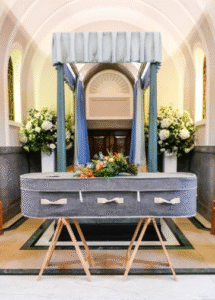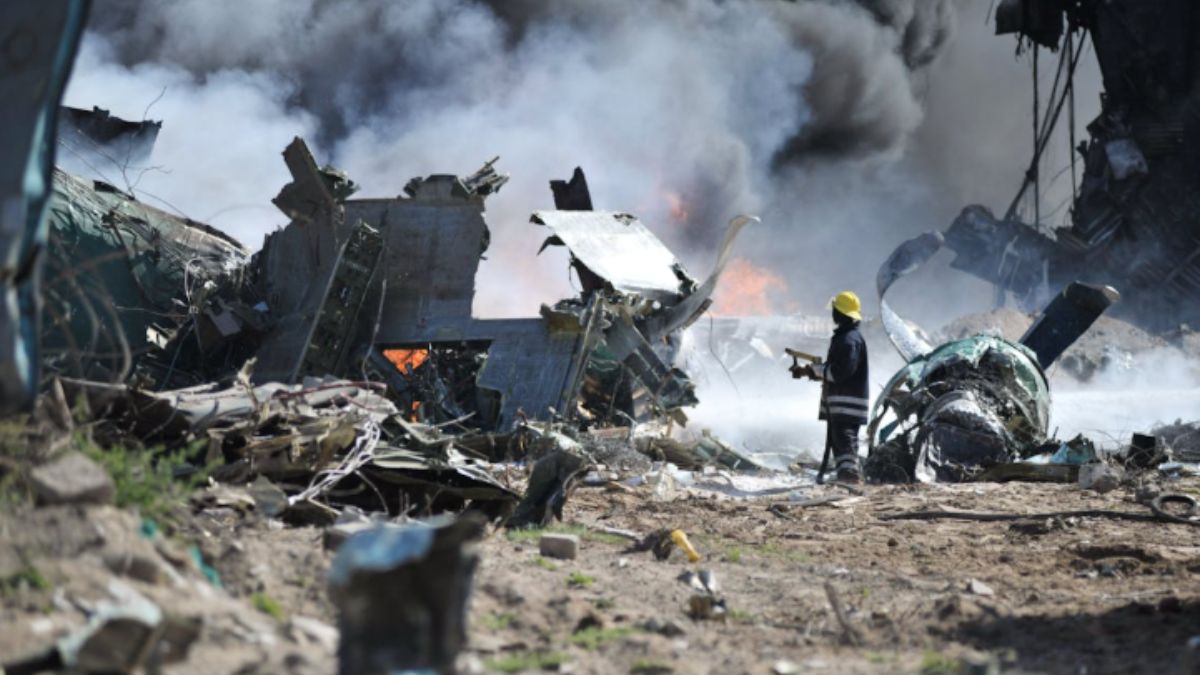Topic
Mastering Live Sound: A Guide to Selecting the Best PA Speakers

When it comes to hosting an event, the quality of audio can make or break the experience for attendees. Whether it’s an intimate gig, a corporate function, or a large outdoor festival, the essence of live sound hinges on the efficacy of your public address (PA) system. The cornerstone of any venerable PA system is a set of speakers that can reliably project crisp, clear audio to every corner of your venue. In this comprehensive guide, we will discuss the pivotal factors to consider when selecting the best PA speakers for your upcoming events.
Understanding PA Speaker Types
Before diving into the aspects of selection, it’s essential to understand the different types of PA speakers available. These primarily include passive speakers, which require an external amplifier, and powered speakers, known as active speakers, which have built-in amplification. The choice between these two will generally depend on the specific needs of an event in terms of portability, power requirements, and the existing sound equipment.
Assessing Your Event Requirements
The nature of your event is a significant determinant in choosing the correct PA speakers. An indoor conference demands a different audio setup compared to a rock concert. Consider the size of the venue, the expected number of attendees, and the genre of audio content. Indoor spaces may require speakers with a more controlled spread of sound, while outdoor events will likely need more powerful speakers with wider dispersion.
Audio Quality and Power
Audio quality should never be compromised. Clarity, volume, and fidelity remain paramount when choosing PA speakers. Assess the power rating of the speakers, measured in watts, to ensure they can handle the size and scale of your event. Also, consider the sensitivity of the speakers, which is a measure of how effectively they convert power into sound.
Portability and Setup
For events that involve different venues or require frequent setup and takedown, portability becomes a crucial factor. PA speakers that are compact and light, with ergonomic designs and easy-to-manage controls, will save time and reduce logistical stress. Some modern PA speakers also have built-in casters or offer compatible carrying cases.
Durability and Longevity
Events can sometimes be demanding on equipment, necessitating that the PA speakers you select are rugged and durable. Look for robust construction, quality materials, and design features that can withstand regular transport and varying climatic conditions. Long-term investment in hard-wearing speakers is more cost-effective than frequently replacing less durable models.
Connectivity and Integration
In an era where technology is continually evolving, your PA speakers should be capable of integrating seamlessly with existing sound systems and devices. Check for connectivity options such as multiple input types, Bluetooth capabilities, and expandability through additional speaker units or subwoofers. These features allow for flexibility across different types of events and venues.
Brand and Reliability
The brand of PA speakers can often be an indicator of reliability and performance. Renowned manufacturers usually have a proven track record of quality and customer satisfaction. Researching brand reputation and reading user reviews can provide insight into the experiences of other sound professionals with the PA speakers you’re considering.
Budget Considerations
While crucial, the budget should not compromise on the necessary features required for your event’s sound. It’s about finding a balance between cost and performance. Consider the long-term value, and do not shy away from investing a little more for speakers that will deliver consistently over time.
The Listening Test
Finally, whenever possible, conduct a listening test. No amount of specifications or features can substitute the experience of hearing the speakers firsthand. Test the speakers with various types of audio to gauge their performance across the spectrum—from spoken words at a conference to the dynamic range of a live concert.
Conclusion
Selecting the best PA speakers may seem daunting, but understanding your event needs, coupled with knowledge of speaker types and features, will pave the way for an informed choice. The sound quality, power, portability, durability, connectivity, and reliability are paramount features to evaluate. Remember, the right PA speakers won’t just carry sound; they will carry the memorable experiences of every event you host.
Therefore, devote the time to research thoroughly, test extensively, and choose wisely to ensure your events resonate with high-fidelity sound. Mastering live sound is an art, but with the right PA speakers, you’ll be well on your way to orchestrating unforgettable auditory experiences for all your attendees.
Topic
Dealing with a Persistent Pest Issue? Here’s What You Need to Do

There is only one thing worse than discovering a pest infestation in your home, and that’s discovering that the pest Pest Issue infestation is still there after you have already taken pest control measures.
By their nature, pests are resilient. If they found a good breeding ground in your home, they will come back, especially if the pest control method you used to get rid of them wasn’t thorough enough.
That doesn’t mean you have to despair. If you have a recurring pest infestation, here are a few important steps you can take to make your property critter-free once and for all.
Hire a Professional Exterminator

If you’ve been trying to manage your pest issues on your own, it’s time to hire a professional exterminator. For persistent pest infestations, DIY solutions or products that you can buy at the local hardware store usually aren’t strong enough to make a difference.
Look for exterminators that are proven to provide lasting solutions to pest control issues. The team at North Fulton Pest Solutions, for instance, has been serving the Atlanta area for more than 50 years, which means they have plenty of experience with all kinds of infestations. Look for positive reviews or ask your neighbors for recommendations.
For persistent pest infestations, you may need multiple visits from an exterminator. Talk with the professionals you hire and make sure that they are transparent about their plans and how much it will cost.
Get Rid of Their Habitats

When pests keep coming back to a home, usually it’s because they found something there that they like. Go through your home and property to find potential habitats and sources of food that may be attracting pests. A professional exterminator can also help you analyze your property to find potential pest breeding grounds.
Throw out any clutter such as old newspapers, junk, or garbage bags, especially in out-of-the-way spaces like crawlspaces and attics. Clutter provides pests with a nesting ground. It can even be a source of food.
Standing water is another attraction for pests, especially mosquitoes and other bugs. Get rid of pools or places where puddles form when it rains. Go over your plumbing to find any hidden leaks that may be attracting pests.
Make Sure They Can’t Come In
There’s no point in making your home unwelcoming to pests if you’re unwittingly inviting them in. Go over your home and identify places where pests can get inside, such as cracks, open windows, or crawlspaces.
Seal off any potential entrance points for pests. That way, once you redo your pest control treatment, they won’t be able to come back.
Finding Pest Control Solutions That Last
Persistent pest infestations are the nightmare of every homeowner, but you can manage them with the right help. Make sure that your home is inhospitable to pests by getting rid of their habitats, food sources, and points of entry. That way, you can prevent future infestations.
To get rid of persistent infestations, you need help from a professional exterminator. They can provide treatments that remove long-lasting pest colonies and advise you on ways to prevent future infestations. It may take multiple visits, but a good exterminator will help you get rid of pests once and for all.
Topic
Important Factors to Consider When Planning a Funeral for a Loved One

Planning a funeral comes with emotional weight, personal responsibilities, and a long list of practical decisions. Grief and planning often don’t blend easily, which can make this time particularly overwhelming. Whether the loss was sudden or expected, the need to prepare a respectful, meaningful service remains. Decisions made during this time can shape how friends and family experience the memorial and how they begin their healing. Thoughtful planning doesn’t eliminate sorrow, but it helps bring clarity and purpose when comfort is needed most.

Professional Funeral Services and What They Offer
Working with experienced funeral professionals can help bring structure and sensitivity to an otherwise stressful process. Many people lean on these services to manage paperwork, coordinate logistics, and create an atmosphere that feels personal yet smooth. These professionals often offer packages that include transportation, preparation of the body, coordination with cemeteries or crematoriums, and arranging for celebrants or religious leaders. Planning every detail alone may be overwhelming during a period of grief. Families often seek guidance, and working with someone who understands how to balance tradition with personal preference can be reassuring. You can also learn more here, by exploring how funeral directors help design services that feel respectful and cohesive. This way, you won’t be left to handle every detail alone.
Budget and Financial Considerations
Funeral costs can vary widely based on location, type of service, burial or cremation choices, and specific wishes. While many families would prefer not to think about expenses during a time of loss, being clear about a budget can reduce stress later on. Planning with transparency helps avoid unplanned charges and emotional overspending.
It can be useful to begin with an itemized estimate and discuss any available payment options or funeral insurance policies the deceased may have held. Community resources, religious organizations, or local governments sometimes offer assistance as well. Balancing financial realities with meaningful planning creates space for a respectful service without long-term burden.
Personal Touches and Cultural Traditions
Every funeral is different because every person is different. Incorporating personal touches, whether a favorite song, family photos, or a particular color, can bring comfort to those attending. For some families, cultural customs guide the ceremony, dictating structure, attire, music, or rituals. Honoring those traditions can offer a sense of continuity and belonging, especially across generations.
Religious and spiritual customs may influence elements like burial versus cremation, the role of clergy, or the timing of services. In other cases, personal values or preferences may shape the service more than tradition. What matters is that the farewell feels honest and fitting. When families make space for personal expression, it often becomes easier to say goodbye.
Logistics and Timing
Timing affects nearly every aspect of funeral planning. This includes not just when the service will be held, but also how long family members have to travel, when religious or cultural requirements call for burial, and how quickly arrangements can be made. Short timelines often demand rapid decisions, which can feel rushed without clear priorities.
Details like securing a venue, confirming the availability of officiants or religious leaders, and printing memorial programs all require coordination. Travel arrangements for loved ones flying in, accommodations for out-of-town guests, or special seating for elderly relatives are all elements that must be balanced in a short time frame. Planning around these needs helps the day run more smoothly and allows mourners to focus on remembering rather than managing.
Cremation vs. Burial Decisions

This decision often comes down to religious beliefs, personal preferences, or the wishes of the deceased. Burial typically involves selecting a casket, plot, and headstone, along with interment services. Cremation, on the other hand, offers more flexibility regarding location and timing. Some families choose to hold a memorial service later, when more people can attend, or to scatter ashes in a place of significance.
There are emotional and practical differences between the two options. Burial may give families a permanent place to visit, while cremation may align with a desire for a more flexible or environmentally conscious approach. Some people plan ahead and make these decisions themselves, but if not, loved ones are left to choose what feels most fitting. Regardless of the path taken, clarity and shared decision-making can reduce conflict and regret.
Communication with Family and Loved Ones
When emotions run high, misunderstandings can easily happen. Communicating openly with family members about decisions, big or small, can prevent confusion and resentment. Sometimes one person takes the lead in making arrangements, but it helps if everyone understands what to expect and has a chance to share input.
Respecting diverse opinions within a family isn’t always simple, especially under stress. But maintaining transparency about decisions, timelines, and costs helps preserve relationships during a time that can either strengthen or strain family bonds. If disagreements arise, returning to what the deceased might have wanted can offer a guiding perspective.
Planning a funeral involves many layers, from emotional care to practical coordination. The choices made during this time can support both personal healing and collective remembrance. Whether through professional guidance, budget clarity, personal expression, or respectful timing, thoughtful planning helps honor a life in a way that brings comfort to those left behind.
Topic
Key Safety Features That Help Prevent Commercial Vehicle Rear-End Crashes

Commercial vehicles have a responsibility when they’re on the road. Since they’re bigger and heavier than most other vehicles, the companies that own them need to take safety precautions to prevent crashes. Even a simple rear-end crash could have dire consequences if a commercial vehicle rather than an ordinary passenger car is involved.
Vehicle technology has evolved to prevent crashes, including rear-end crashes. The law requires companies that operate commercial vehicles to make sure that they have these features to protect the safety of everybody on the road.
Here are some key safety features that can help stop commercial vehicle rear-end crashes from happening. If you are involved in a crash and the company did not take these precautions, you have grounds for a lawsuit due to their negligence.
Driver Training
No amount of technological advances can compensate for poorly trained, exhausted drivers. Commercial vehicle companies are obligated to train and vet their drivers to make sure they are able to operate their vehicles.
Drivers need to know what to do to prevent crashes on crowded routes with vehicles that have slower response times when stopping. In many cases where there is an accident with a commercial vehicle, the driver is at fault. However, their employer often shares the responsibility for not training them adequately or for putting them on schedules that make rested response times impossible.
Driver training combined with new vehicle technology can help prevent rear-end crashes and make the road safer for commercial and personal vehicles.
Forward Collision Warning
Forward collision warning systems are a new form of technology that is revolutionizing road safety. Initial studies found that cars and trucks with FCW and other emergency measures (more on those later) were nearly 50% less likely to be involved in rear-end crashes.
A forward collision warning system (FCW) detects objects, including other vehicles, in front of the truck. It uses a complex combination of radar sensors and cameras routed through a central control unit to do so. When the system calculates that your vehicle is too close to something in front of you, it will send you an alert.
The FCW adjusts its alerts according to the speed, size, and response time of the vehicle you are driving. This helps reduce commercial vehicle rear-end crashes caused by misjudging the power and inertia of the vehicle, which is usually larger than a passenger car.
The alert system also reduces distracted driving. If a second of inattention looks like it will result in a crash, the system alert jolts the driver into action.
Lane Departure Warning Systems
Modern vehicles have multiple systems monitoring potential crashes depending on the potential danger. Another important warning system is the lane departure warning, which sends the driver an alert if they are drifting out of their lane without signs that they are intentionally switching lanes.
Lane departure warning systems are most effective at stopping roadside crashes or side-on crashes. They also help reduce the rate of rear-end crashes because they stop a driver from accidentally rear-ending a car in the lane next to them.
Drivers keep enough distance between themselves and the vehicle ahead of them in their own lane, but may not be paying attention to what’s going on in the lane next to them until it’s too late.
Advanced Emergency Braking Systems
Besides advances in the detection of potential crashes, vehicle technology has also developed better response protocols to help prevent crashes. One of the most important developments, particularly for commercial fleets, is Advanced Emergency Braking Systems (AEBS).
AEBS usually works with crash detection technology to activate the brakes if the vehicle detects that a crash is likely. If the driver doesn’t respond in time, the vehicle activates the emergency braking system to avoid a crash.
AEBS are important on commercial vehicles because they usually take longer to stop due to their bulk. Drivers may misjudge the amount of time it will take them to stop their truck, leading to an accident. An automated emergency braking system reduces the risk of human error.
Even if a truck is unable to stop completely, an emergency braking system can help it slow down enough to prevent severe injuries from a crash. Reducing the impact of rear-end crashes is just as important as preventing them.
Preventing Rear-End Crashes with Commercial Vehicles
Thanks to advances in technology, commercial vehicle rear-end crashes have decreased. Forward Collision Warning systems, lane departure warning systems, and Advanced Emergency Braking Systems are just some of the developments that reduce the risk of human error causing accidents.
If a company fails to update its fleet to have the latest safety precautions, it could be liable for any accidents that its trucks cause. Commercial fleets owe it to other drivers to have the latest in safety technology.

 Cartoon1 year ago
Cartoon1 year agoUnlocking the Potential of Nekopoi.care: A Comprehensive Guide

 Game1 year ago
Game1 year agoExploring Aopickleballthietke.com: Your Ultimate Pickleball Destination

 BUSINESS1 year ago
BUSINESS1 year agoWhat Companies Are In The Consumer Services Field

 BUSINESS1 year ago
BUSINESS1 year agoUnraveling the Mystery of 405 Howard Street San Francisco charge on Credit Card

 HOME IMPROVEMENT1 year ago
HOME IMPROVEMENT1 year agoVtrahe vs. Other Platforms: Which One Reigns Supreme?

 TECHNOLOGY1 year ago
TECHNOLOGY1 year agoThe Guide to Using Anon Vault for Secure Data Storage

 ENTERTAINMENT11 months ago
ENTERTAINMENT11 months agoUnderstanding Bunkr Album: A Comprehensive Guide

 ENTERTAINMENT1 year ago
ENTERTAINMENT1 year agoThe Epic Return: Revenge of the Iron-Blooded Sword Hound
















